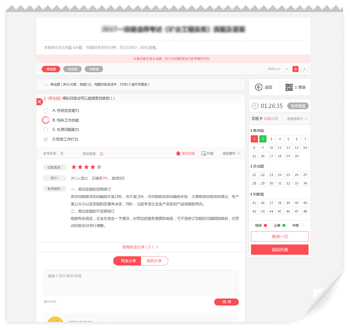2024年翻译资格考试《三级笔译综合能力》预习试卷(二)
- 年份:2024年
- 类型:模拟试题
- 总分:100.00分
- 时长:120分钟
- 题量:64
- 做题人数:26人
 切换考试
切换考试

手机在线做题

A.enforcing
B.entreating
C.endeavoring
D.enchanting
【正确答案-参考解析】:参加考试可见
A.successful
B.reliable
C.fearless
D.fearsome
【正确答案-参考解析】:参加考试可见
A.had said
B.would say
C.might have said
D.has said
【正确答案-参考解析】:参加考试可见
【正确答案-参考解析】:参加考试可见
【正确答案-参考解析】:参加考试可见


已购买考试(0)